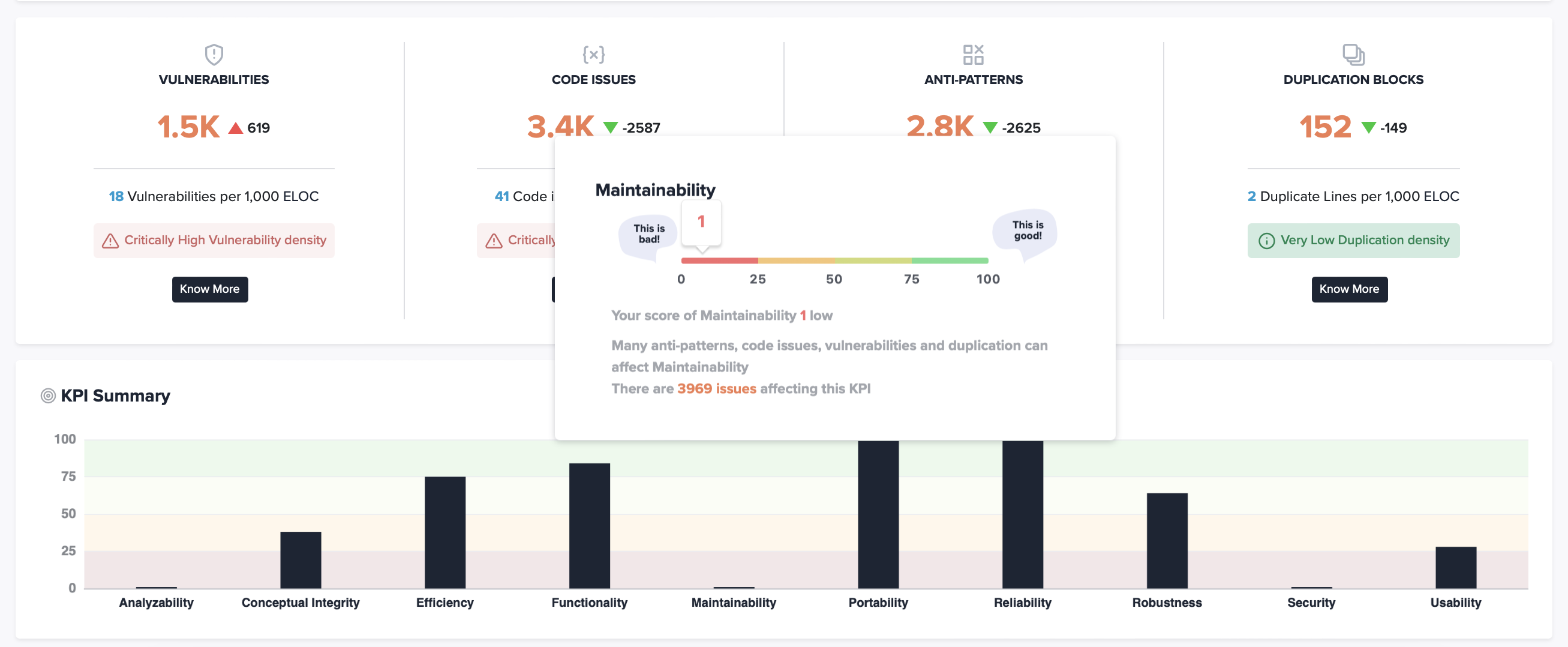KPIs
Key Performance Indicator
Key Performance Indicator (KPI) helps you effectively track the performance of your source code based on maintainability, reusability, functionality, and 7 others parameters.
The performance of your repository based on KPIs can be seen on the Repository dashboard page.
The below image summarizes the performance of the Groovy repository. It shows that the source code is not easy to maintain. It also scores low on security and needs immediate attention to the code issues affecting security and maintainability.

KPI | Description |
|---|---|
Accuracy | Characterizes functional correctness of the software and the amount of functional defect. |
Adaptability | Characterizes the number of changes needed for the adaption of software to different specified environments. |
Analyzability | Ability of diagnosis of deficiencies or causes of failures, or for identification of parts to be modified. |
Changeability | Characterizes the amount of effort needed for modification, fault removal or for environmental change. |
Conceptual Integrity | Defines the consistency and coherence of the overall design. This includes the way that components or modules are designed, as well as factors such as coding style and variable naming. |
Efficiency | Depicts the reliability of the software. It can be achieved by removing redundant code and following coding standards. |
Functionality | Characterizes the ability of the software to adhere to the functional requirements. It assures that the function can perform a task smoothly to keep its quality intact. |
Maintainability | Characterizes the ease and speed with which code can be modified or extended to optimise the existing functionality and enhance the quality of the product. |
Portability | Allows moving software from one platform (hardware/software platform) to other platforms. This helps to port software or product among different environments. |
Programmability | Characterizes the effort needed for validating the software and about the test coverage. Good stability makes it more likely that faults in a system can be isolated in a timely and effective manner. |
Reliability | Characterizes frequency of failure, ability to withstand component failure, ability to recover from a failed state. |
Replaceability | Characterizes the plug and play aspect of software components, that is how easy it is to exchange a given software component with a specified environment. |
Resource Utilization | Characterizes behavior of software from a resource perspective ( e.g. CPU, disk, network usage, etc). |
Robustness | Characterizes the ability to cope with unknown errors during execution or the ability of an algorithm to continue to operate despite abnormalities in input, calculations, etc. |
Security | Protects the software from malicious attacks and threats that help software retain its integrity and authentication. |
Stability | Characterizes the risk of unexpected or negative effects as a result of the modification. |
Testability | Characterizes the effort needed for validating the software and about the test coverage. Good stability makes it more likely that faults in a system can be isolated in a timely and effective manner. |
Updated 7 months ago
